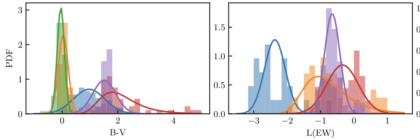We developed an autonomous observation system for cataclysmic variables. It can decide what kind of data to collect in highly uncertain situations.

Hiroshima Astrophysical Science Center, Hiroshima University

We developed an autonomous observation system for cataclysmic variables. It can decide what kind of data to collect in highly uncertain situations.

(This is a textbook written in Japanese.)
データを触り始めた(広い意味での)物理系の学生向けに、とりあえずこれ一冊、と言える本を目指しました。

We have developed a method to separate the observed fluctuations into components based on the time lag structure in black-hole X-ray binaries.

We characterize the variability of blazars using the Ornstein–Uhlenbeck (OU) process, and search for the features that are discriminative for the two subtypes, FSRQs and BL Lac objects.

The observed SEDs of blazars cannot determine all parameters of the synchrotron self-Compton model in most cases. We studied this problem in detail, and present the SED analysis of the blazar Mrk 421.

We developed an autonomous observation system for cataclysmic variables. It can decide what kind of data to collect in highly uncertain situations.

We characterize the variability of blazars using the Ornstein–Uhlenbeck (OU) process, and search for the features that are discriminative for the two subtypes, FSRQs and BL Lac objects.

We have developed a method to separate the observed fluctuations into components based on the time lag structure in black-hole X-ray binaries.

We report on a detailed study of the optical afterglow of GRB 061121 with our original time-series photometric data.

We developed an autonomous observation system for cataclysmic variables. It can decide what kind of data to collect in highly uncertain situations.